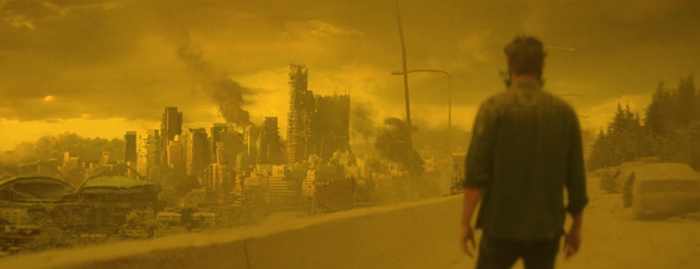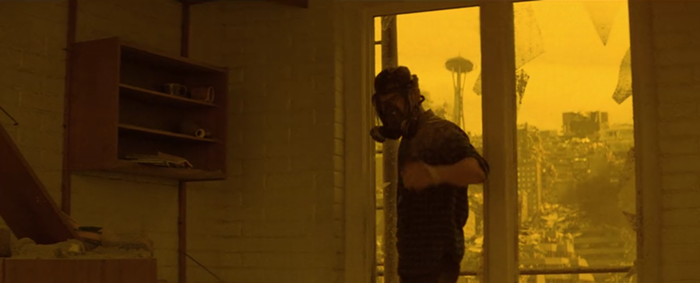
For sure, Netflix's apocalyptic thriller How It Ends, which was released this Friday (July 13), is not very good. It has lots of holes in its plot (I will not go into any of them in this post), and an ending that makes no sense, no matter how much thought you apply to it. Also, Forest Whitaker's performance is just terrible. You can tell the director, David M Rosenthal, had no power over him. He just did his character—which the script failed to fully develop and exploit—his own damn way. Whitaker plays Tom, a former soldier who made lots of money as a civilian and now lives in a posh apartment in downtown Chicago. He enjoys the company of his gorgeous wife, he sips top-shelf whisky, he thinks about how he made all the right decisions in life, and, most importantly, he wonders why his daughter, Samantha (Kat Graham), lives in Seattle with a man, Will (Theo James), who seems to be making all the wrong decisions in life. Tom hates Will as much as he hates faraway Seattle.
(SPOILER ALERT) While Will is visiting Chicago on business, and the day after Samantha's father quarrels with her boyfriend during dinner in the posh pad, something terrible happens to Seattle (an earthquake? a nuclear explosion? an alien invasion? an impact event?), and communication with that city, and the whole of the West Coast, and large parts of the US cuts. What happened? Is Samantha dead? Has Seattle toppled into the sea? Or was it slammed by the mother of all waves? At this point, it's time for a road movie to begin. The father and his daughter's boyfriend travel in a fancy Caddy across an America that has been reduced to radios broadcasting prophets of the apocalypses, violent white tribes and savages, a Darwinist struggle for gasoline, collapsing infrastructure, army checkpoints, and Biblical weather events. Only Will makes it to Seattle. And when he gets there, we finally see the Seattle that the members of Safe Seattle see all of the time. Night and day.
On Facebook, Safe Seattle describes itself as "a group of neighbors, business owners, and homeless advocates working together to develop and promote safety..." This self-description, however, is far less accurate than the one journalist Erica Barnett provides on her blog The C Is For Crank: "...a group of Seattle residents organized around the shared conviction that the city is a 'shithole' overrun with 'criminal vagrants' and carpeted with needles." Many of Safe Seattle's members live in Seattle's most affluent neighborhoods—like Magnolia and Ballard—but are under the confounding impression that their streets are the city's toughest and most dangerous and most lawless. If you visit any part of Ballard, you will think all is going so well (nothing much going on, lawns that are under control, no children on the streets, like in poor neighborhoods); but if you visit Safe Seattle's website, you find posts by people who appear to be living in hell.
What do these people see when they walk or drive down Seaview Avenue or Jones Avenue or Earl Avenue or Veiwmont Way, which is in Magnolia. If you watch How It Ends, you finally get the picture. This is their Seattle. A total disaster area. Broken glass everywhere. No law or its enforcement. Pandemonium.

At the end of the movie, the boyfriend finds his girlfriend. She lives in what looks like the middle of Magnolia's Discovery Park with an evil software engineer. He has some whiskey and a theory of what the disaster, which rumbles now and then, actually is. It's humanmade, he claims. The boyfriend gets all hot and bothered by this theory. He is convinced no one can know what actually happened. The calamity is like some god who can't be named. He and his girlfriend jump into a car and leave Seattle forever. They are pursued by the unknowable disaster.



















